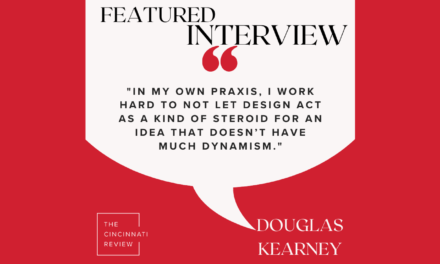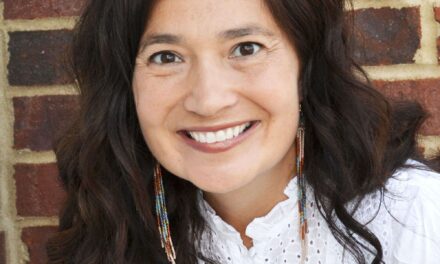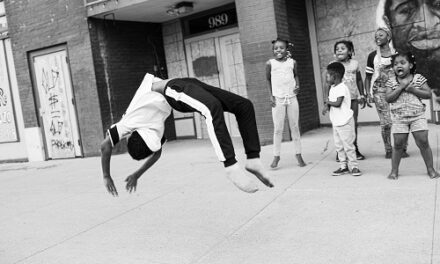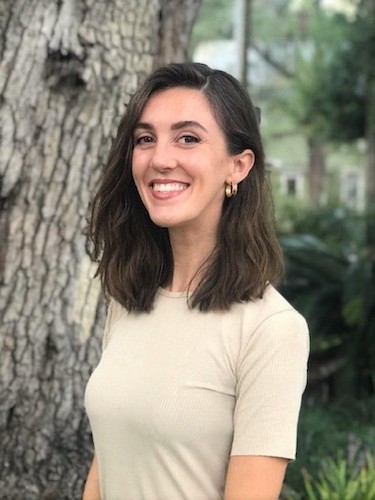
Assistant Editor Haley Crigger: It’s a genuine pleasure to present this brief profile of Caroline Harper New, winner of the 2022 Robert and Adele Schiff Award for poetry and also an accomplished multi-artist. Her award-winning poem, “Notes on Devotion,” is an unflinching interrogation of ritual making, the timeless call-and-response between behavior and meaning that lies at the center of human existence and, of course, the production of art. Our editorial team was delighted, then, to discover that her artistry exists in many forms: painting, photography, dance and choreography, filmmaking, and more. You’ll be able to read “Notes on Devotion” in Issue 20.1, releasing this spring. Until then, please enjoy New’s reflections on her life as a multi-artist and a selection of her photographs, all shared with New’s permission:
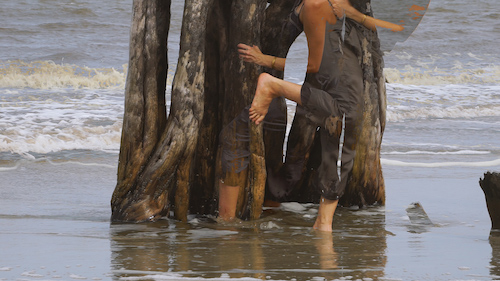
Your website describes you as a writer, artist, and anthropologist, and I noticed you’ve also done some dance and choreography. Is it possible to pinpoint where your creative practice began? In other words, did dance make a way for poetry? Or poetry for anthropology?
My thoughts go to this little notebook of poems I had as a kid. I kept it in a waterproof bag and hid it in the branches of this loquat tree in our backyard. Of everything I do, I think poetry feels the most foundational. It’s the form I use to make sense of my own life, but also the form it took me the longest to “formally” study. I really resisted anything English-related in undergrad, because I wanted to use the time to explore something new—which ended up being anthropology, with dance and painting in my free time.
Around this time, a close friend started introducing me as a “writer” and “artist.” At first, I really resisted—it kind of embarrassed me, felt a little pretentious—but I realized that embracing that title gives you permission. Those strange little habits of collecting words, taking notes when people speak, becoming preoccupied with patterns, start to feel purposeful. And that’s when you allow yourself to indulge, to push those thoughts even further. I started to create and share intentionally, outside of school structures.
But my interests didn’t always feel cohesive. There was a point about six years ago when I felt really fractured, like my interests were conflicting and my sprawling art was confusing. Essentially, I felt I needed to choose a focus. I brought this up to an amazing professor and artist, Katie St. Clair, who taught me at Davidson College. In response, she hung all of my paintings together on a wall, and suddenly, they all told a story. She pointed out how, even if they were different subjects or styles, some color or shape or movement related them. Then, she dissected how my poetry and anthropology research also interrogated the same concepts: memory, tenderness, extinction, the sea, and so on. That was definitely a turning point for me, because I began to embrace that all of my practices are actually just different tools I use to confront the same questions. That was the point when I think all of my practices started conversing with each other.
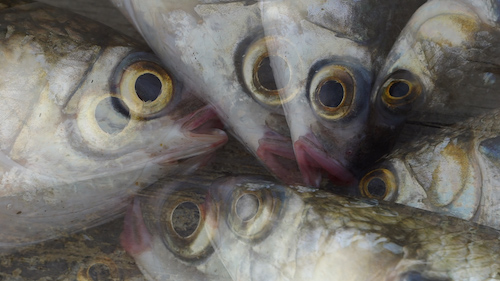
This is a big question. How do your other practices shape—or relate to—your writing?
Because I work in multiple mediums, people sometimes expect me to do lots of visual poetry, or textual art, but I’ve never really combined my art forms. My brain gets very deep into one mode, and I have trouble leaving it. There are a couple of exceptions, where I’ve revisited past work and transformed it: In 2017, I choreographed a dance based on an autobiographical poetry series called “Sweetened & Steeped.” And in 2021, I wrote a series of love letters between two swamp monsters that I continue to mutate—into music, watercolor, photography, a film. Every time I open that one up, it turns to something else. Like a boggart.
That said, concepts from one art often give me frameworks to apply to another. Things like: If it’s bad, just paint over it. People study what they don’t understand. The audience will find a narrative when you can’t. Never start on a blank canvas. Kill your darlings.
I’ve also found that I get quite claustrophobic being in a single discipline for too long. Since I’ve been at the University of Michigan, there are some days where I think, If anyone tries to start another conversation about poetry, I’m going to implode. Talk to me about skeletons. Or floodplains. Or squids. When this burnout starts to happen, being able to enter multiple spaces, connect with different types of people, and shift brain gears keeps me from despising the things I love.
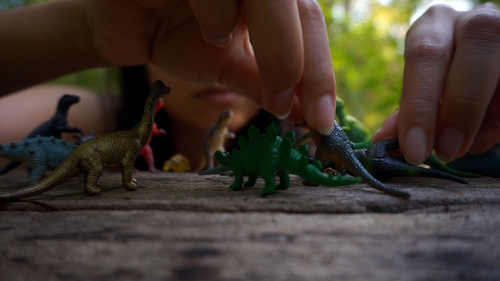
What is challenging about working across multiple disciplines? What are its greatest rewards?
Art can incur a lot of self-doubt, and when you’re working across multiple disciplines, that doubt can magnify. But to counterbalance that, the more forms you open yourself up to, the more likely you are to be inspired. When your brain feels like snow and you have no desire for language, you pivot to painting. Or sculpture. Or dance. Some months you collect words, some months you collect movement, some months you collect light. When part of you starts to cocoon, another part can wiggle its toes and get started.
The greatest reward is the people I’ve met across fields. Every time you form a real connection, a new little portal of life opens. I got into film because of a visual artist I met in Wyoming a few years ago. I went to Wyoming because a musician from the university invited me on a collaborative trip. This made me reach out to my friend India, who acted and sang in a film I’ve been working on for the past year. It also opened me up to doing another musical collaboration with a composer here at the University of Michigan. Basically, the more forms you open yourself up to, the more people you meet, the more you learn, and the richer your life and art becomes. Always being new at something keeps you going.
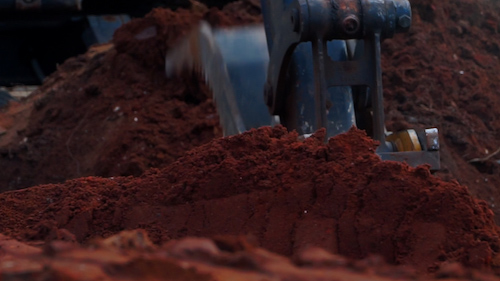
What creative projects are you working on right now?
I’m not sure if being a multi-disciplinary artists spurs my frenzy, or if my frenzied nature has made me a multi-disciplinary artist. Probably both. But having lots of plates spinning at once keeps me from feeling bored or burnt out with any one plate.
Right now, I have two full-length manuscripts I’m working on, both rooted geographically in southern Georgia. The first turns to natural disaster, magical realism, and scientific discovery to interrogate the consequences of devotion. This one is the most personal, with the “I” quite present. The second is more experimental and strange. It’s comprised of several long narrative poems based on local mythologies, all circling the concept of extinction. It may be something I take into a visual realm.
Outside of this, I’m writing lots of love poems that belong nowhere yet, and continuing to mutate the swamp-monster-love-letter project. Most recently, I’ve been collaborating with Lyana Cremnitz, a composer at the University of Michigan, who has made the most beautiful composition for a lullaby in that series.
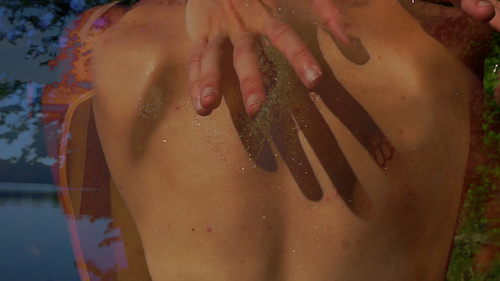
Caroline Harper New is a writer and visual artist from Bainbridge, Georgia. Rooted in the Gulf Coast, her poems straddle archaeology, folklore, and environmental issues, often tracing the line between love and ruin. She received her BA in anthropology from Davidson College and her MFA in poetry from the University of Michigan. She is the winner of prizes from The Cincinnati Review, Bellevue Literary Review, Palette Poetry, Malahat Review, and San Diego Annual Review. Her work has appeared recently in American Poetry Review, Southern Humanities Review, PRISM International, Driftwood Press, and Ruminate; and is forthcoming in Michigan Quarterly Review and Colorado Review. See more at www.carolineharpernew.com


